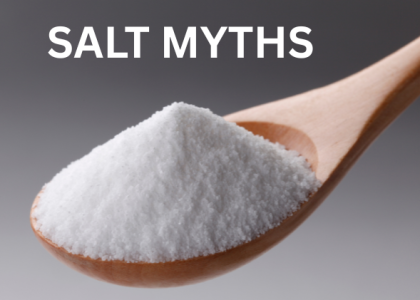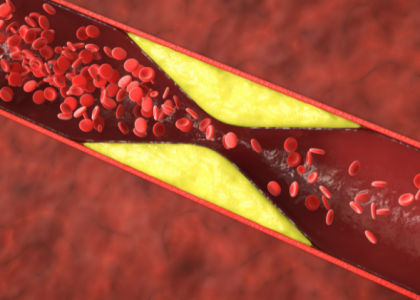Have you ever put off going to the doctor even when you knew something wasn’t right? You’re not alone. Many South Asians delay seeking medical care, often until small problems become serious ones. Let’s talk about why this happens and how we can change this pattern.
“It Won’t Happen to Me”
Many of us believe heart problems happen to other people, not to us. We think:
“I’m too young for heart disease.”
“I’m vegetarian, so my heart must be healthy.”
“I exercise sometimes, so I should be fine.”
“My cholesterol is normal, so I don’t need more tests.”
But here’s the reality: South Asians develop heart disease up to 10 years earlier than other groups [1]. And many people who seem perfectly healthy still have heart attacks.
My uncle was slim, never smoked, and walked every day. He still had a heart attack at 48. He had no idea that silent plaque was building in his arteries for years.
Family First, Self Last
In South Asian culture, putting family first is deeply valued. This is beautiful, but it can have unintended consequences for our health.
Many South Asians, especially women, put their family’s needs before their own health:
“I can’t go to the doctor now – who will cook for the family?”
“My son has exams this month, I’ll deal with my chest pain after that.”
“My parents need me to drive them to appointments – my health check can wait.”
The truth is, by neglecting your health, you may not be there for your family when they need you most [2].
Fear of Bad News
Sometimes we avoid doctors because we’re afraid of what they might find. It feels safer not to know.
“What if they find something serious? I’d rather not know.”
“If the doctor says I need surgery, what will happen to my family?”
“I don’t want to think about being sick.”
But early detection is the key to successful treatment. Finding problems early gives you more options and better outcomes [3].
The Shame Factor
In many South Asian communities, health problems can carry shame or stigma. People worry about what others will think.
“What will people say if they find out I have heart problems?”
“No one should know I’m taking medication.”
“People will think something is wrong with our family.”
This concern about “log kya kahenge” (what will people say) keeps many from seeking the care they need [4].
Cultural Beliefs About Medicine
Some South Asians have cultural beliefs that affect how they view Western medicine:
“My parents never went to doctors and lived long lives.”
“I’ll try home remedies first, and if they don’t work, then I’ll see a doctor.”
“If God wants me to be healthy, I will be.”
Traditional remedies have their place, but modern medicine can detect and treat problems before symptoms even appear [5].
Language and Cultural Barriers
For immigrants or those who don’t speak English well, interacting with the healthcare system can be intimidating:
“I don’t understand what the doctor is saying.”
“They don’t understand our food or lifestyle.”
“I don’t know how to navigate the healthcare system here.”
These barriers make it harder to access care, even when people want to [6].
Small Steps Make a Big Difference
You don’t need to change everything at once. Here are small steps you can take:
1. Schedule one test
Start with just one important test, like a Calcium Score if you’re over 40, or an ApoB blood test. One test is better than none.
2. Go with a buddy
Ask a friend or family member to get tested with you. It’s less scary and you can support each other.
3. Make it a family value
Talk openly about health with your family. Say: “In our family, we take care of our health so we can be there for each other.”
4. Find a doctor who understands
Look for a doctor who understands South Asian culture and health risks. Ask friends for recommendations.
5. Remember your why
When you’re tempted to cancel an appointment, remember why your health matters: “I want to see my grandchildren grow up” or “My family needs me to be healthy.”
Real Stories, Real Change
Priya, a 45-year-old mother, kept ignoring her fatigue and shortness of breath. “I have three children and aging parents – I don’t have time to be sick,” she thought. When she finally went to the doctor, they found serious heart blockages that required immediate treatment.
Now Priya tells everyone: “If I had gone earlier, treatment would have been much simpler. Don’t make my mistake.”
Raj, a 50-year-old accountant, only went to the doctor because his wife insisted. He felt perfectly fine. His regular cholesterol was normal, but an ApoB test showed high risk, and a Calcium Score revealed early plaque. With medication and lifestyle changes, he’s protecting his heart before any damage occurs.
“I thought I was invincible,” he says. “Now I know that feeling fine doesn’t mean everything is fine inside.”
It’s Better to Know Early — Not Late
When it comes to your heart health, what you don’t know can hurt you. Early detection means:
- More treatment options
- Less invasive procedures
- Better outcomes
- More time to make lifestyle changes
- Peace of mind for you and your family
Don’t wait for a heart attack to start taking care of your heart. As we say in our community: “Prevention is better than cure.”
Take one small step today for your health. Your future self and your family will thank you.
References
- [1] Stanford Health Care. (2022). “Heart Disease in South Asians.”
- [2] UCLA Health. (2023). “Confronting mental health barriers in the Asian American and Pacific Islander community.”
- [3] National Center for Biotechnology Information. (n.d.). “Barriers to Health Care Access in 13 Asian American Communities.”
- [4] National Center for Biotechnology Information. (n.d.). “Cultural factors influencing the mental health of Asian Americans.”
- [5] National Center for Biotechnology Information. (n.d.). “Cultural barriers to health care for southeast Asian refugees.”
- [6] BMC Public Health. (2022). “Access to health services among culturally and linguistically diverse populations.”




